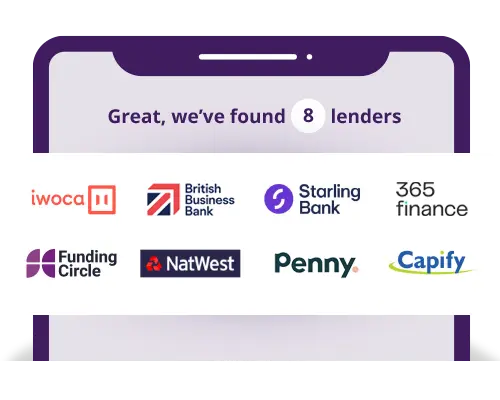According to data from QuickBooks, 61% of small business owners have struggled with cash flow issues, issues which have led to 32% of them being unable to pay suppliers, wages, and even themselves.
This is not a situation you want to find yourself in, and even if you’ve done everything right, whether invoices get paid on time or not is usually out of your control.
So how can you stop your business from sliding into insolvency? In this post, we’re discussing some ways you can adequately manage your business before it’s too late to do anything about it.
1. Obtain impartial advice
Managing a business can be lonely, and if you need clarity, talking to an unbiased party can help you figure out what to do next or serve as reassurance.
Business Debtline is a charity dedicated to giving impartial and free business debt advice. You can talk to an advisor using the handy chat function for a quick response, or you can call them to speak with someone directly.
If you’re not ready to ask a question, you can search their site and access useful resources from budget planning to general advice about managing debts.
Suggested reading: How to get free business debt advice for your SME
2. Sell surplus assets and lease equipment going forward
If you have equipment you don’t use or surplus office furniture, consider selling them to help bolster your bank account and repay your debts. Then, going forwards, a great alternative to buying assets is to lease them instead. With equipment leasing, you pay an initial fee to lease it, but then you pay for it in manageable monthly instalments rather than paying out a huge sum to purchase something outright.
Leasing can help you manage your cash flow while helping you stay one step ahead of competitors. With leasing, you can always access the latest technology and software without having to fork out for anything in full. At the end of the leasing period, you can just give it back.
3. Seek out financial support
When suppliers and customers don’t pay on time, it can send your finances into crisis, leaving you unable to settle your own debts. With help from a loan, you can cast aside cash flow worries, knowing you can easily pay wages and other expenses every month regardless of how many invoices have been settled.
Invoice finance can help you unlock up to 95% of the value in your unpaid invoices. This means you do not have to wait an agonisingly long time for your client to make a payment, you can get this cash immediately and page debts, invest in new stock, and generally grow your business.
4. Have outstanding debts chased
Outstanding debts cause major headaches for UK SME business owners, but your prayers could be answered with invoice factoring. Invoice factoring is a form of invoice finance, and the factoring company takes care of chasing all your business-to-business debts for you. You won’t have to waste energy and time chasing payments. Instead, you can relax knowing it’s all taken care of.
There are a handful of pros and cons to both invoice factoring and invoice discounting, so make sure you read about them on the links below before making your decision.
Read more about invoice factoring and invoice discounting.

5. Only work with trustworthy suppliers and customers
It’s easier said than done, but you have to start learning from past mistakes and trust your gut instincts.
If you’ve had problems with a customer or supplier before, you need to assess whether you should work with them again. If you do decide to work with them again, you can consider changing the payment terms for suppliers, asking for staggered payments, so you don’t have to wait for the full payment at the end.
A good way to weed out reliable and trustworthy suppliers is to ask other business owners for recommendations and ask some preliminary questions to see how they treat you and also learn whether they offer discounts for quick payment — the more you can save, the better.
6. Reduce operational costs
If you’re struggling to keep your head above water, it might be time to start making some cost savings from reducing your workforce to analysing your fixed costs such as your rent and other property costs. You need to nip unnecessary spending in the bud.
Other things you could reduce costs on:
- Office space
- Outsourced business processes or services
- Staff perks
- Automate the tasks draining resources
7. Be open with all your suppliers
Communication is key when managing your supplier relationships, so if you’re struggling with cash flow management, you might find it beneficial to re-negotiate payment terms so you can better manage your outgoing payments.
To negotiate contracts with existing suppliers, see if you can offer them something of value, maybe you can help them enter a new market, or introduce them to useful connections. Whatever it is that you can use to bargain with them, do it.
8. Invest in an accurate forecasting system
To know exactly where you are when it comes to cash flow is crucial to business success. Without this knowledge, you’re steering your business blindly each month.
Software like QuickBooks and Sage can help you understand detailed cash flow forecasts, sometimes years in advance. These reports help you plan for the future; they help you focus on patterns of spending so you can easily address any issues you see on the horizon that could disrupt your business in future months.
9. Don’t discount the power of good marketing and customer experience
We all know what marketing is, but understanding your audience in granular detail means you’re able to create campaigns that resonate with them. Take time to survey current customers, understand why they purchase from you, ask them their initial barriers to purchasing from you, and target your most lucrative audience segments.
Did you know it’s easier to sell to existing customers than to acquire new ones? That means you shouldn’t cast aside current customers. Building loyalty is important for brand advocacy, and there’s also more money to be made here; according to data, increasing customer retention by 5% can increase profits from 25-95%.
10. Implement a sign off process
Although currently, your staff members might have the autonomy to spend money on your behalf, to get a handle on your cash flow once again, it could be a good idea to implement a sign off process for all expenditure for all staff.
When budgets are tight, you must know what you’re spending your money on — even when it comes to small things. Then, when a staff member approaches you to sign something off, you can decide whether it’s frivolous spending or necessary to keep your business running smoothly.
11. Be consistent when chasing invoices
If you’ve decided to pursue outstanding debts yourself, you need to be consistent in your approach. With so many things to think about when running a business, you mustn’t let customer communication slip down your priority list. Pick up the phone regularly to check in with the payment process — have they authorised the invoice yet? When can you expect payment?
To sum up
Business insolvency isn’t inevitable; as you can see from this list, you can employ tactics to help you better manage your cash flow. And cash flow is the reason 90% of small businesses fail.
Having visibility and control over your cash flow is crucial, and hopefully, we’ve shared some helpful tips to help you achieve that.
If you are looking for a cash injection to increase your working capital, or you’re interested in learning more about what loan products are suitable for you, we’re here to help.
At Capalona, we’ve helped thousands of businesses access the cash they need to support their business’s growth; let us help you, too.






